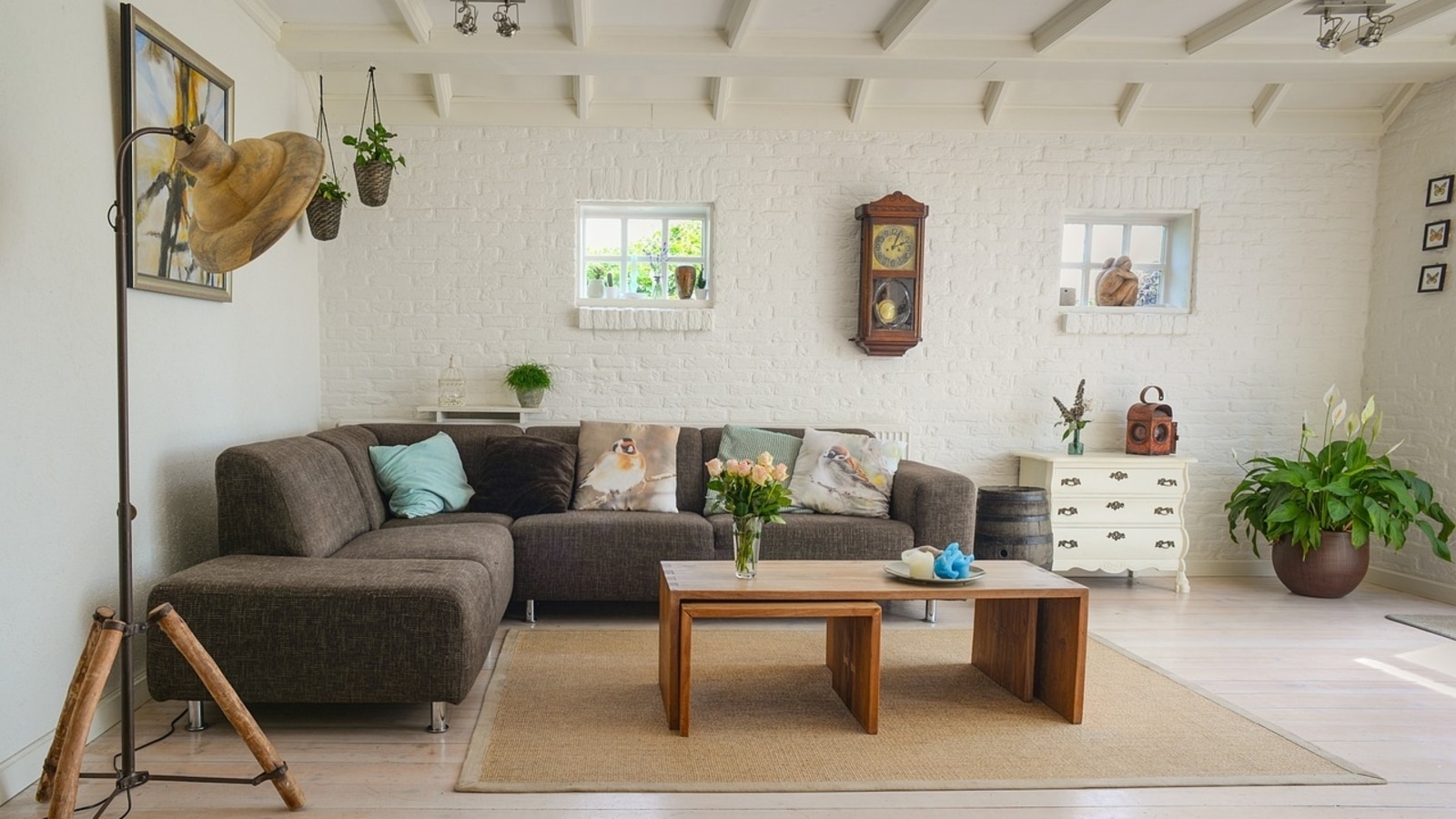New Delhi: Cities have had an intimate relationship with rivers throughout history, shaping their development, prosperity, and identity. Unfortunately, over the past several decades, the narrative surrounding rivers and lakes in India has been dominated by tales of pollution and degradation.

The tide, however, finally seems to be changing, with cities across the country, such as Kota, Indore, and Coimbatore rediscovering the potential of their waterfronts, and transforming them into vibrant public spaces that blend business, culture, and recreation. Others, such as Mangaluru and Pune, are currently in the process of developing their waterfronts.
Kota’s Chambal riverfront, inaugurated in September 2023, has transformed a once-neglected 6-km stretch into a much sought-after city attraction. The ₹1,400 crore project developed by the Urban Improvement Trust (UIT) features 27 theme-based ghats, each highlighting a facet of Indian cultural heritage. For example, Geeta Ghat has all 700 verses of the 18 Gita chapters engraved on a marble plaque; while the Rajputana Ghat represents architecture from different regions of Rajasthan.
“Over the decades, the Chambal river had been reduced to a garbage-filled backyard. Now, it has become the city’s beautiful face. This is the first heritage waterfront of its kind in the country representing India’s culture and spiritual traditions,” said Anoop Bartaria, the architect for the project.
Indeed, the riverfront has quickly become a popular attraction for both locals and tourists, with approximately 10,000 people visiting it daily (while entry is complimentary for Kota residents, tourists are required to pay an entry fee of ₹200).
Digvijay Singh, CEO of Indore Smart City, which has developed a 3.3-km riverfront along the Kahn river, said, “One of the most important achievements is that the riverfront has reconnected the city’s residents to the river. Besides, there has been at least a 40% increase in property prices in the area.”
Similarly, authorities in Coimbatore have transformed the Valankulam lakefront — a garbage yard until three years ago — into the city’s most vibrant public space, boasting amphitheatres, exhibition spaces, co-working spaces, restaurants, children’s play areas, cycle tracks, and a viewing pavilion overlooking the lake.
“Around 100,000 people gathered at the lakefront to celebrate the New Year. The place hosts a variety of events, from Pongal festivities to art shows, cultural performances by local artistes, and even corporate product launches,” said Baskar Srinivasan, general manager of Coimbatore Smart City, which developed the waterfront.
“Most importantly, the redeveloped waterfront has greatly improved the quality of life for residents. The per capita space in the city has increased from 2.17 square metres to 4.9 square metres, achieved by removing massive lakeside encroachments,” he said.
A history of riverfront transformation
In India, rivers have been the unique confluence of history, heritage, geography, mythology, culture, and business for centuries. During the colonial period, several port cities in India, such as Mumbai, Kolkata, and Chennai, saw the development of waterfronts driven by trade and commerce thanks to their important role in transportation.
“Many important structures such as factories and government buildings in cities were built close to rivers. For instance, some of Kolkata’s most important buildings are located along the river, as they were the main arteries of transport. However, with the evolution of transport technologies, rivers gradually lost their significance, leading to neglect and degradation, manifested in issues like water pollution and encroachment,” said Manu Bhatnagar, an urban and environmental planner and principal director at INTACH, where he heads the natural heritage division.
In the decades following World War 2, many cities worldwide embarked on a trend of reclaiming and repurposing their waterfronts — a movement that has gained momentum in India over the past decade. In India, the Sabarmati riverfront — the first of its kind project — was conceived in the late 1990s with the aim of “reconnecting Ahmedabad to its river”.
Construction began in 2005. The first phase of the project was inaugurated in August 2012 and has since hosted Chinese President Xi Jinping, witnessed the boarding of a seaplane during the 2017 Gujarat election and MK Gandhi’s 150th birth anniversary celebrations. It also hosts several annual events such as the Sabarmati Marathon, Sabarmati Cyclothon, flower shows, the International Kite Festival, and airshows, trade shows, and exhibitions.
“The riverfront has catalysed substantial commercial development in its precincts and has given Ahmedabad an excellent social infrastructure and public space, which are what cities need most today. We have planted over a million trees and shrubs as part of the project and are promoting it as a healthy habitat,” said Keshav Varma, who served as the city’s municipal commissioner in the late 1990s and is now the chairman of the Union government’s high-level committee (HLC) on urban planning as well as of the Sabarmati Riverfront Development Corporation.
The Sabarmati riverfront–an 11.5-kilometre stretch through the heart of the city– has inspired many cities across the country to develop their own waterfronts. These redevelopment projects also align with the Union government’s urban vision — in 2021, the government launched the River Cities Alliance (RCA), a joint initiative of the ministry of jal shakti (MoJS) and the ministry of housing and urban affairs (MoHUA), with a vision to connect river cities and focus on sustainable river-centric development.
RCA began with 30 member cities and has since expanded to include over 100 river cities across India. Today, many riverfronts have been developed under the Centre’s Smart Cities Mission including those Guwahati, Indore, Nashik, Srinagar.
In fact, the HLC headed by Verma has identified 25 cities that should receive funding to rejuvenate their riverfronts. “The most attractive and vibrant locations in cities are their waterfronts. But I think we have not realised their potential. There are hundreds of cities on waterfronts that can be developed. Globally, the highest amount of return on investment is on riverfronts,” Varma said.
Environmental concerns
While waterfront development projects aim to create vibrant urban spaces, they have raised several environmental concerns, such as the disruption of river ecosystems, loss of biodiversity, flood risks due to interference with natural floodplains and increased vulnerability to climate-related risks.
Bhatnagar highlighted that the development of new riverfronts in India often follows a Western model that does not encourage direct interaction with the river.
“Everyone feels our riverfronts are getting ‘smart’, but unfortunately, most riverfronts are a celebration of concrete and stone. We need to understand that our rivers are monsoon rivers, which expand during the monsoon, unlike in the West, where they remain constant,” he said.
“Our rivers cannot be seen in isolation from their banks. Rivers have important functions that need to be retained while conceiving these projects. There should be minimum intervention around the river while ensuring that the biodiversity and ecology of the rivers are maintained,” he said.
The European concept of a riverfront, Bhatnagar said, allows for strolling along its banks but discourages descending into the river, as exemplified by the Seine in Paris. “A similar model has been adopted in most riverfronts in India. We need to understand that we have a religious connection with the river and people like to bathe in it,” he said.
Cities and architects involved in these projects assert that they are addressing environmental and ecological concerns by adopting green infrastructure and sustainable design practices to mitigate any negative impacts of riverfront development.
One of their significant achievements, they say, involves tapping and diverting nullahs, along with constructing sewage treatment plants (STP) to clean rivers and lakes.
Digvijay Patil, general manager of Nashik Smart City, which developed the Godavari riverfront in that city, said, “We have desilted the river to reduce flood risk and also de-concretised it by removing many structures that were built over the years. We have maintained soft edges as much as possible and used basalt stone in construction. We planted more than 200 indigenous species of trees and created a rose garden with 250 species.”
While numerous completed and upcoming riverfront development projects have faced criticism from activists and environmentalists, the one to revive seven of Coimbatore’s centuries-old lakes, including Periyakulam, under the Smart Cities Mission, has earned praise for integrating green infrastructure into waterfront development.
Comprehensive topographical, catchment area studies, and detailed mapping of all inlets, and their pollution load with quality and quantity tests informed the eco-restoration design, said Akash Hingorani, principal, Oasis Designs, the lead designer for the Coimbatore project.
“The lake-bund heights, the slopes etc were meticulously worked out to ensure use of nature-based solutions for water treatment and for slope stabilisation and erosion control. The green infrastructure to create natural edges instead of the conventional concrete edges helps create habitat to help regenerate native biodiversity, to harness the benefits of the ecosystem services,” he said.





